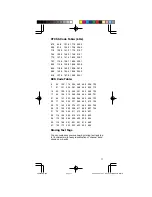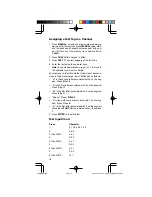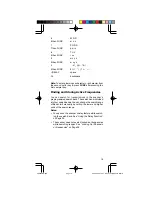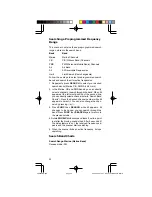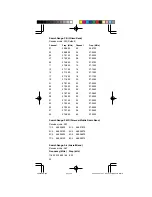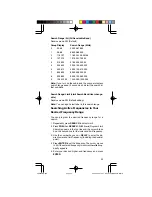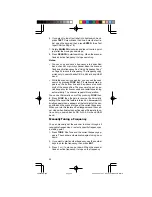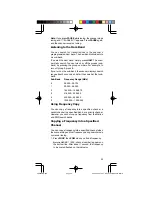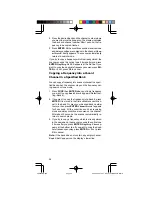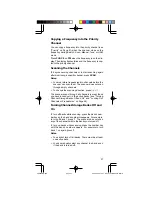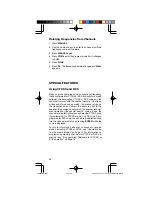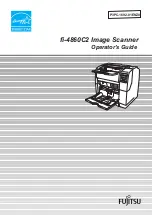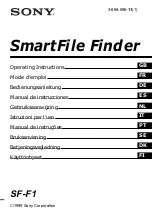
13
amateur radio transmissions. When the scanner receives
a transmission on a channel set to the FM mode, it al-
ways stops on the transmission.
CTCSS Mode (CT)
CTCSS mode sets the scanner to receive transmissions
using frequency modulation (FM) with Continuous Tone
Coded Squelch System (CTCSS) subaudible tone codes.
CTCSS allows multiple users to share a single radio fre-
quency without hearing each other’s transmissions. In
your PSR-295 scanner, the CTCSS feature can be used
to block the reception of transmissions on shared chan-
nel to only those that use the CTCSS tone that you have
specified. CTCSS mode also features a Code Search
setting that allows you to display and store unknown
codes into the channel memory. CTCSS tones can some-
times be heard as a low “hum” in the background of a
voice transmission. Many systems that use CTCSS trans-
mit a special “turn off code” at the end of each transmis-
sion. The turn off code causes a properly equipped re-
ceiver to mute before the transmission ends, eliminating
the “squelch tail” burst of noise the commonly occurs
when the signal is lost. CTCSS turn off code performance
can be affected by weak signals.
DCS Mode (DC)
DCS mode sets the scanner to receive transmissions
using frequency modulation (FM) with Digital Coded
Squelch (DCS) subaudible data signaling. DCS is very
similar to CTCSS, except that a digital code is transmit-
ted instead of an audio tone. Like CTCSS, DCS allows
multiple users to share a single radio frequency without
hearing each other’s transmissions. In your PSR-295 scan-
ner, the DCS feature can be used to block the reception
of transmissions on a shared channel to only those that
use the DCS tone that you have specified. DCS mode
also features a Code Search setting that allows you to
display and store unknown codes into the channel
memory. DCS data can sometimes be heard as a low
“purring” sound in the background of a voice transmis-
sion. Some DCS systems transmit a special “turn off code”
at the end of each transmission. The turn off code causes
a properly equipped receiver to mute before the trans-
mission ends, eliminating the “squelch tail” burst of noise
the commonly occurs when the signal is lost.
PSR295OM.p65
2004/07/06, 15:37
Page 13
Adobe PageMaker 6.5J/Win

















